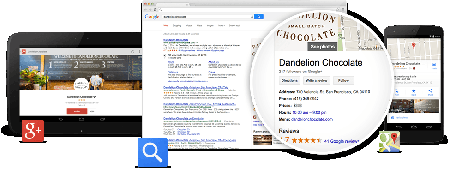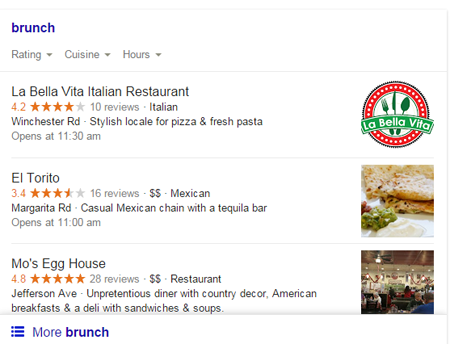A Look at Local SEO Changes

If you stop to think about how far Google has progressed in the past 15 years, you will likely agree that it is nothing short of amazing.
Just 15 years ago Google was little more than a directory of sites. When you use Google today, the beginnings or your search are met with suggested searches, pulled from the behavior of millions of users. Google has progressed an equal amount with local searches and considering the growing prevalence of local search, it is a good thing they have.
The recent announcement of giving preference to mobile friendly sites is one that many of you should have seen coming a few years ago. A study conducted in 2012 revealed that over 40 percent of the queries mobile users are local based. That number has only grown since then.
In order to provide the best user experience, Google makes between 500 and 600 algorithmic changes every year. While most of these changes are subtle and will have little effect in the way you rank, some of the changes made by Google are large enough to shake the foundation of local SEO to the core. Here are some of the big changes made by Google in the past few years.
1.Google My Business
This tool actually started out as Google Places, which was part of the Google+ program. 2012 brought about the Google+ Local Business. A few years later, we now have Google My Business. For local business owners, this set of tools serves as a one-stop shop where they can look at what is happening in the local landscape, update their business information, make proper use of photos, and receive reviews.

For the local SEO marketer, this tool is a goldmine because it becomes very easy to manage your visibility and boost your rankings if you are paired up against other businesses whose SEO is not as good as yours is. Chief among the tools on this platform is Google analytics, a tool that helps you track the process of managing your marketing campaigns in an instant. Google My Business now also provides notifications when someone leaves a review about your business. This allows you to respond quickly and engage with clients more efficiently. Throw in AdWords Express and you are a moving target, monitoring campaigns from any point with your smartphone or tablet.
2. Carousel
This feature was launched in 2013, when Google started using images as a prominent search component. It started at the desktop and the resources were impressive. Those business owners who used high-resolution images received more attention from users and were therefore able to attract more visitors to their site. Later, Google, moving toward its mobile leanings, started inching closer toward mobile-targeted formats, effectively dealing Carousel a deathblow. However, this feature has moved on, with Bing showing a lot of preference to it in the final months of 2014. The three pack which Google used to replace Carousel could see some areas in local SEO suffering lower volumes of traffic, while local businesses using general business SEO and PPC will fare well.

3. Pigeon
Local SEO gurus believe that this update was essentially a better rendition of the Venice Update which was one of the major changes of 2012, where Google choose to prioritize local organic results over global results. This made it far easier for local businesses to generate traffic without having to worry about global results coming up before them in searches that were supposedly giving region-based results. What pigeon did in 2014 is what Venice was supposed to have accomplished two years prior. At this point, local directories are be favored by Google, such that their results are coming up ahead of others. This change has benefitted those running startups and small companies while bigger companies have suffered as their results decreased. While traffic to insurance, job, and movie sites decreased, those in education, food and hospitality have seen increased traffic across the board.
These major changes in the way local SEO works have had a major impact in optimization at the local level, with some ranking factors decreasing in important while others increased in their pull. Factors whose importance increased include:
- The authority of URLs of landing pages
- The domain authority of a website
- The click-through rates emanating from specific search results
- The importance of inbound links to a particular domain
- The presence of a city or state in the title of the landing page as seen by the end user
- The quality of inbound links to the url of the landing pages
- The authority and authenticity of structured citations in a website
- The specific physical address of a particular business in the city the users are searching from
The factors in local SEO that have taken a hit from these updates include:
- Proper category association
- The nearness of a location to centroid
- My Business pages that have been individually verified
- Keywords that have a geographical edge in the url of a website
- The amount of structured citations
- The location of a keyword in the title of the business of the title modifier
In addition to these changes, Google released two new updates in 2015. Both of these have leaned heavily toward mobile, where sites had to increase the mobile responsiveness of their sites as the search giant made a final push toward high-level mobile functionality. What these sites needed to do was implement full mobile versions of their websites to ensure that users did not get a blank check every time they got to homepages. The second update was all about indexing the pages in websites so that they work together with the applications that a company provides to its customers. This was to enable Google to provide users with even better targeted results.
Local SEO has always been a huge focus of Google's, and the near future is going to see even more changes than the past has. While this area of optimization keeps changing, the fundamentals of good SEO are not changing. You need to have a well-optimized site that loads quickly from any device and provides users with the useful and timely content.









